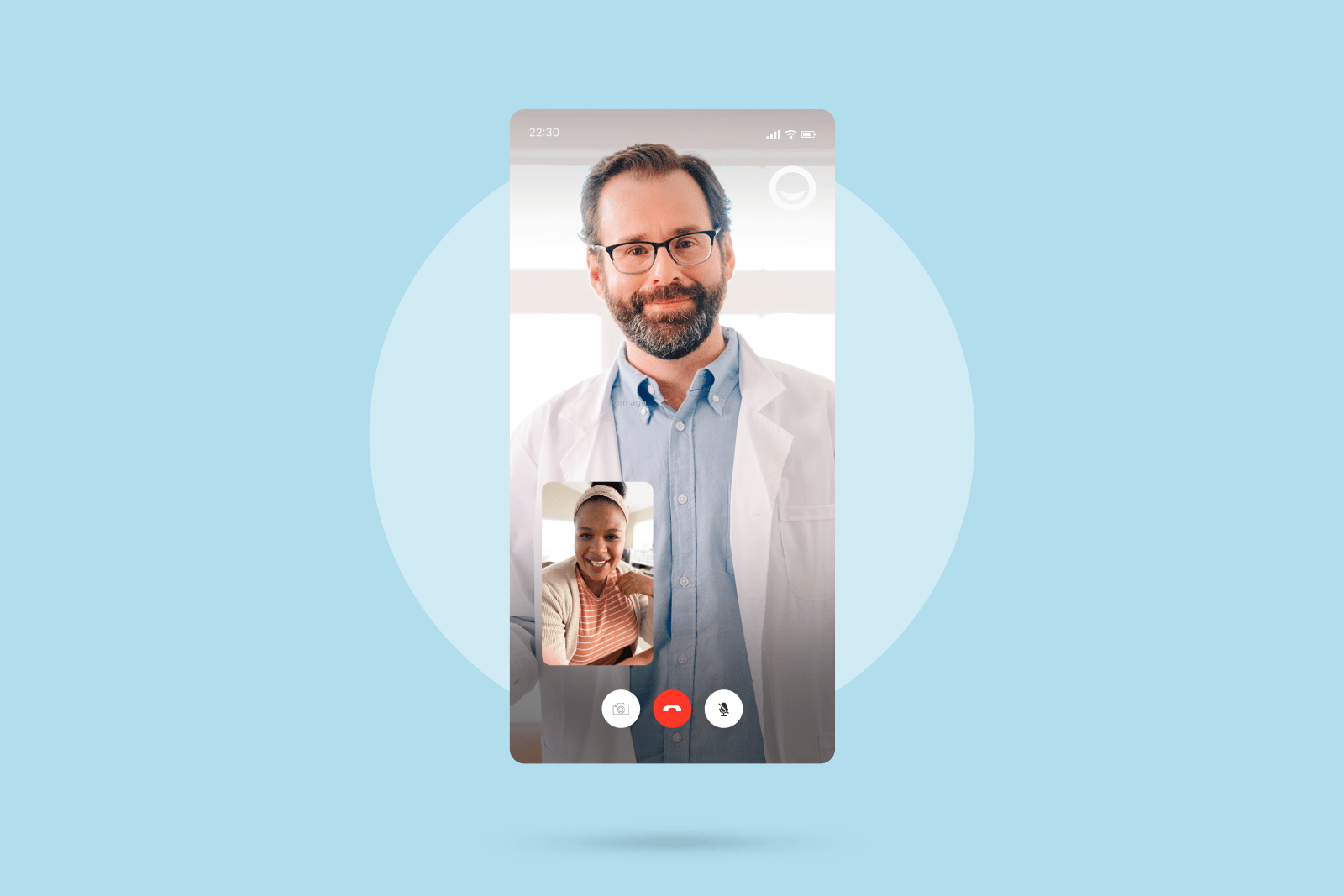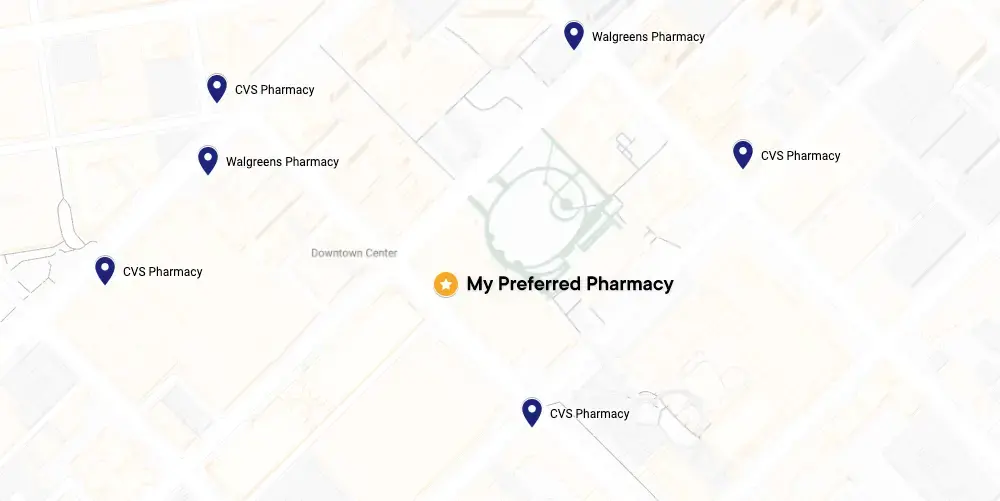- A weakened immune system
-
Heightened emotional stress
-
Older age
-
Undergoing cancer treatments or major surgery


To diagnose & treat your rash that may be shingles, consult with one of our board-certified primary care doctors online today. Get a new prescription to treat shingles or refill an existing prescription today.*

*Prescriptions are provided at the doctor's discretion. Learn more about our controlled substances policy and how to save up to 80% with our prescription discount card. PlushCare doctors cannot treat all cases of shingles. Our primary care physicians can conduct an initial evaluation of your symptoms but may need to refer you to a specialist or for in-person treatment. If you are experiencing life-threatening symptoms, seek emergency medical attention immediately.
Shingles is a viral infection caused by the varicella-zoster virus, the same virus that causes chickenpox. Even after your chickenpox infection clears up, the virus can remain dormant in your nerve cells for years before reactivating as shingles.
For many adults, the chickenpox virus is inactive and never leads to shingles. However, for about one in three adults, the virus will reactivate in life.
Shingles is caused by the varicella-zoster virus, which also causes chickenpox infection. If you've had chickenpox, you can develop shingles when the virus reactivates in your body. The reason why shingles develops in some adults but not others remain unclear. Shingles is more common in older adults due to their lower immunity to infections. Some possible risk factors for shingles include:
Heightened emotional stress
Older age
Undergoing cancer treatments or major surgery
According to the CDC, the first symptom of a shingles outbreak is pain and burning on one side of your body along a certain area of skin. After the initial symptoms, you may experience:
A linear rash that appears a few days after the rash may tingle, burn, and/or be sensitive to the touch. Fluid-filled blisters that burst open and crust over. Intense itching.
A shingles rash does not always appear red. Depending on your skin tone, your rash may look dark pink, dark brown, or purple. You may also experience other symptoms, such as:
If you experience any symptoms of shingles, talk to your doctor. Your doctor will perform a physical exam to diagnose your shingles and determine the best treatment plan.
Treatment for shingles often includes:
Medications: Depending on your symptoms, your doctor may prescribe an antiviral medication or anti-inflammatory to relieve itching and pain.
Home remedies: Home remedies can help soothe your skin, reduce pain, and relieve itching. For example, you might apply calamine lotion to calm irritated skin, or take a cool bath to clean your rash
If you're experiencing pain or itching, talk to your doctor about shingles medications to ease your symptoms. If you want to skip the visit to a doctor's office, you can book a virtual appointment with a board-certified physicians at PlushCare to get shingles treatment online. Your doctor may recommend:
To relieve symptoms and shorten the length of the illness:
According to the National Institute on Aging, getting vaccinated is the best way to prevent shingles. The current shingles vaccine (Shingrix) is a safe, easy, and effective way to prevent shingles. It’s over 90% effective at preventing shingles and long-term nerve pain.
All children should receive two doses of the chickenpox vaccine (varicella immunization) to prevent severe shingles symptoms and complications in adulthood. Adults who have never had chickenpox should also get vaccinated.
It’s important to talk to your healthcare provider as soon as you experience shingles symptoms, especially if you face an increased risk of developing shingles.
Seek medical attention if:
A rash appears near your eye. If left untreated, a shingles rash can lead to permanent eye damage.
Your shingles rash is widespread and painful.
The most common symptoms of shingles include:
A tingling, burning, numb, or painful sensation on your skin
A rash that forms in a belt-like pattern and affects one side of the body
Painful fluid-filled blisters that burst, dry up, and crust over
During the early stages of shingles, you may also experience other symptoms, such as:
Fever or chills
Upset stomach
Headache or sensitivity to light
Shingles happen when the varicella-zoster virus, the same virus that causes chickenpox infection, becomes reactivated. It’s unknown why the virus becomes reactivated in some people and not others, but many people who develop shingles have a weakened immune system.
Your risk of developing shingles may be higher if you:
Have had a transplant
Are currently undergoing chemotherapy
Have HIV or AIDs
Take immunosuppressant treatment
Age and gender are also important risk factors for shingles. Most cases of shingles happen over the age of 50, and women are more likely to develop shingles than men. Even young adults, however, can get shingles.
If you have shingles, home remedies can help reduce pain and soothe skin:
Wearing loose-fitting clothing to let your rash breathe.
Take a cool bath with colloidal oatmeal or use calamine lotion to calm your skin.
Apply a cool washcloth or cold compress to your blisters to ease the pain.
Keep the area dry. Avoid scratching your blisters to avoid skin infections and scarring.
Take over-the-counter pain medications to relieve pain.
Get plenty of rest.
Wash your hands frequently with soap and warm water to avoid spreading the virus. If someone has never had chickenpox, they may develop it if contact from your shingles rash occurs. They will not get shingles from your rash.
The best medications for shingles are antiviral medications, which help shorten the length and severity of the illness. At PlushCare, our online doctors can prescribe:
Cyclovir (Zovirax)
Famciclovir (Famvir)
Valacyclovir (Valtrex)
Antivirals can ease the discomfort of shingles, especially if you take them within 72 hours of symptom onset. They can also prevent pain that happens after the rash disappears, called post-herpetic neuralgia.



To request Shingles treatment and get a new prescription or refill on your prescription, join our monthly membership and get discounted visits.
Membership
$19.99
First month free
Visits
Copay
Often the same as an office visit. Most patients with in-network insurance pay $30 or less!
We accept these insurance plans and many more:



Membership
$19.99
First month free
Visits
$129
PlushCare is dedicated to providing you with accurate and trustworthy health information.
Centers for Disease Control and Prevention. Clinical Overview of Shingles (Herpes Zoster). Accessed on June 18, 2024. https://www.cdc.gov/shingles/hcp/clinical-overview/?CDC_AAref_Val=https://www.cdc.gov/shingles/hcp/clinical-overview.html
Cleveland Clinic. Shingles. Accessed on July 27, 2022. https://my.clevelandclinic.org/health/diseases/11036-shingles
Mayo Clinic. Shingles. Accessed on July 27, 2022. https://www.mayoclinic.org/diseases-conditions/shingles/symptoms-causes/syc-20353054
National Institute on Aging. Shingles. Accessed on July 27, 2022. https://www.nia.nih.gov/health/shingles
PlushCare content is reviewed by MDs, PhDs, NPs, nutritionists, and other healthcare professionals. Learn more about our editorial standards and meet the medical team. The PlushCare site or any linked materials are not intended and should not be construed as medical advice, nor is the information a substitute for professional medical expertise or treatment.